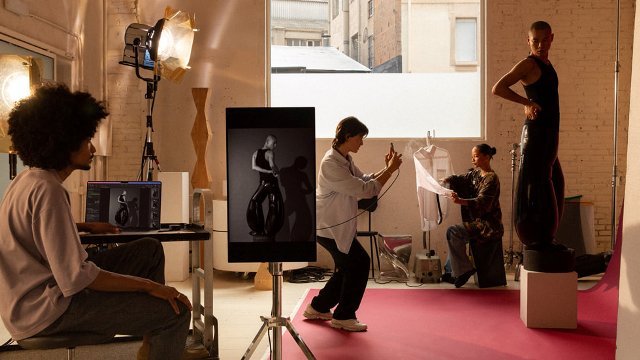In a highly anticipated event, Apple revealed the latest addition to its iconic iPhone lineup, the iPhone 15. This cutting-edge device boasts several notable improvements, including a brighter display, a 48-megapixel camera, and a commitment to sustainability with a battery containing 100 percent recycled cobalt.

The launch comes at a time when the global smartphone market faces challenges, particularly in China, where Apple has been contending with regulatory restrictions and increased competition from Huawei Technologies, Reuters news report said.
Huawei Technologies has raised the second-half shipment target for its Mate 60 series smartphone by 20 percent, Securities Times reported on Tuesday. Huawei expects new smartphone shipments for 2023 to reach at least 40 million units, the report said.
Key features of the iPhone 15 include:
Enhanced Satellite Connectivity: The iPhone 15 introduces satellite connectivity, allowing users to summon roadside assistance when needed. This feature is being rolled out in partnership with the American Automobile Association (AAA) in the United States, providing added safety and convenience.
USB-C Charging: Apple has announced the adoption of USB-C charging cables for both the iPhone 15 and the charging case of its AirPods Pro devices. This change enables users to utilize the same charging cables already compatible with iPads and Macs, streamlining the charging process.
A16 Bionic Chip: The iPhone 15 will be powered by the A16 Bionic chip, the same processor that powered the iPhone 14 Pro, ensuring high-performance capabilities.
Pricing: The iPhone 15 will be available at a starting price of $799, while the larger iPhone 15 Plus will begin at $899.
Camera Advancements: Leveraging machine learning, the iPhone 15 can detect individuals within the frame, allowing users to easily transform regular photos into stunning portraits directly or at a later time using the Photos app.
In addition to the iPhone 15, Apple also unveiled the Series 9 Watch, featuring a remarkable “double tap” feature. Users can perform tasks such as answering phone calls by tapping their thumb and finger together twice without making physical contact with the watch. The Series 9 Watch uses machine learning to detect subtle changes in blood flow, enabling users to manage tasks like walking a dog or holding a cup of coffee with their other hand.
Furthermore, the Apple Watch Ultra 2 offers new features tailored for cycling and diving, accompanied by what Apple claims to be its brightest screen to date.
 Apple is also making significant strides in sustainability. Lisa Jackson, the company’s environmental chief, announced that Apple will no longer use leather in any of its products. Instead, they are replacing some of these materials with “FineWoven,” a textile designed to mimic the feel of suede, aligning with Apple’s commitment to environmental responsibility.
Apple is also making significant strides in sustainability. Lisa Jackson, the company’s environmental chief, announced that Apple will no longer use leather in any of its products. Instead, they are replacing some of these materials with “FineWoven,” a textile designed to mimic the feel of suede, aligning with Apple’s commitment to environmental responsibility.
CEO Tim Cook revealed that Apple is on track to release its Vision Pro mixed-reality headset early next year, highlighting the company’s ongoing pursuit of innovation in the technology landscape.
While Apple continues to introduce new features and products, it’s worth noting that the iPhone still represents a significant portion of the company’s revenue, accounting for over half of Apple’s $394.3 billion in sales last year. The global smartphone market has faced challenges, with shipments declining from 294.5 million total phones to 268 million in the second quarter. However, Apple’s decline in shipments has been less severe than that of its competitors, indicating the enduring popularity of the iPhone.
Canalys forecasts North America’s smartphone shipments will fall 12 percent in 2023, as the region recorded the worst quarterly performance for over a decade in Q2 2023. The premium segment (smartphones costing US$1,000 or more) will remain solid as both vendors and the channel are investing here, leveraging early trade-ins and financing options.
The ASP of North American smartphones increased to US$738 in Q2 2023, up from US$663 in Q2 2022. Apple and Samsung boosted their premium segment shipments with 25 percent and 23 percent growth respectively in Q2 2023, Canalys said today.
IDC’s Nabila Popal said: “We have seen the more expensive Pro/ProMax models take up an increasing share of the flagship line up during launch quarter, further driving Apple ASP year after year to almost $1000 by 2023Q2.”
IDC also said 76 percent of Apple’s smartphone shipments are premium compared to 20 percent of Samsung’s. Both brands are increasing their focus on premium products within their respective portfolios, but clearly Apple’s portfolio shift has been much more rapid.
Analysts are keeping an eye on Apple’s potential developments in generative artificial intelligence, a technology trend that could have profound implications for the company’s future products and services. While Apple has remained relatively tight-lipped about its plans in this area, industry experts are eager to see if any hints or advancements are revealed in the near future.
